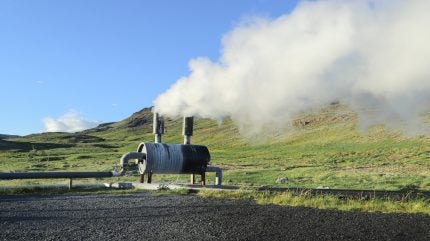
The United States Geological Survey (USGS) has identified that geothermal resources in the Great Basin of Nevada could potentially provide up to one-tenth of the electricity needs of the US.
The finding marks a potential increase from geothermal’s current contribution of less than 1% to the national power supply.

Discover B2B Marketing That Performs
Combine business intelligence and editorial excellence to reach engaged professionals across 36 leading media platforms.
The recent assessment by the USGS, which updates the organisation’s 2008 findings, suggests that with the commercial-scale deployment and the continued success of evolving technologies, geothermal energy could see a substantial rise in its share of the US power generation.
These technologies have been refined over the past decades within both the geothermal sector and the oil and gas industries.
Currently, most geothermal power is produced from hydrothermal systems, where groundwater naturally flows through heated rocks.
The Great Basin of Nevada and adjacent parts of the states of California, Oregon, Idaho, Wyoming and Utah, contain vast areas with heat trapped in impermeable rock.

US Tariffs are shifting - will you react or anticipate?
Don’t let policy changes catch you off guard. Stay proactive with real-time data and expert analysis.
By GlobalDataTo harness this energy, engineers are developing enhanced geothermal systems that involve creating fractures in the impermeable rock to allow water to circulate and bring the heat to the surface. There, it can be used to generate electricity.
The significance of the Great Basin’s geothermal potential is rooted in its history. It was one of the last regions in the lower 48 states to be mapped in the 1800s, and the geological surveys of its public lands eventually led to the establishment of the USGS in 1879.
USGS acting director Sarah Ryker stated: “USGS assessments of energy resources are about the future.
“We focus on undiscovered resources that have yet to be fully explored, let alone developed. We launched this work in the Great Basin because of the area’s history of geothermal activity – and we found even more potential for baseload power than had previously been known. Leveraging this work along with artificial intelligence and machine learning techniques will help us assess the entire nation’s potential for geothermal energy with greater speed and accuracy.”
The Energy Act of 2020 has since directed the USGS to evaluate the nation’s geothermal energy potential comprehensively.
To carry out this directive, the USGS and its partners have developed new heat flow maps, underground temperature maps and methods to estimate the efficiency of energy extraction and conversion from heat to electricity.
Following the Great Basin, the USGS plans to assess the Williston Basin in North Dakota.





